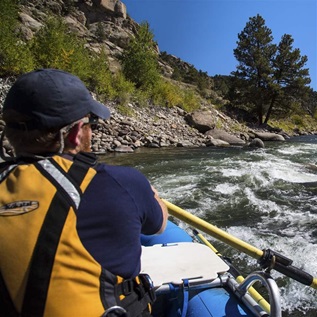What to Watch for in Election 2014: Major Reforms Are in Effect in North Carolina and Colorado
North Carolina's House Bill 589 reduced the number of days allowed for early voting from 17 to 10, but it mandated that the counties develop early voting plans that provide the same number of early voting hours as were offered in 2010.
Following an order by the Supreme Court in October, other changes that will affect the experience of registering and voting in North Carolina include:
- Voters will not be able to register and vote on the same day during the early voting period.
- The state has ended the preregistration program for 16- and 17-year-olds.
- The state will no longer sponsor an annual voter registration drive.
- Ballots will no longer offer the option to vote a straight one-party ticket by marking a single box.
- If a voter goes to the wrong precinct and casts a provisional ballot, then none of their votes will be counted. Previously, voters who were in the wrong location could use provisional ballots, and their selections for all state and county races for which they were eligible to vote would be counted.
Colorado’s House Bill 13-1303 requires that all registered voters automatically be mailed a ballot. Voters will have a choice of returning the ballots by mail or dropping them at a stand-alone drop box (in certain counties), or they can cast their ballots in person at a voter service and polling center during the early voting period or on Election Day.
Residents in the county can vote at any voter service and polling center regardless of which precinct they live in. These centers were used in select counties during past elections, but now they are replacing traditional polling places across the state.
Pew wrote about Denver County’s implementation of some of these reforms during the state’s 2013 coordinated election—local elections held on the same day statewide—but the 2014 election will have higher voter participation. Other changes that will affect the registration and voting experience in Colorado include:
- Voters are able to register to vote at voter service and polling centers at the same time they cast their ballots during the early voting period or on Election Day.
- The state established a minimum number of voter service and polling centers for each county based on the number of active registered voters—those who have cast a ballot during the past two federal election cycles—in the jurisdiction.
- Election officials may send election materials (except ballots and voter information cards) electronically.
Election Day is almost here. Learn more about our new and free tools that make voting information more accessible.
And follow us on Twitter using #electiondata and get the latest data dispatches, research, and news by subscribing today.











